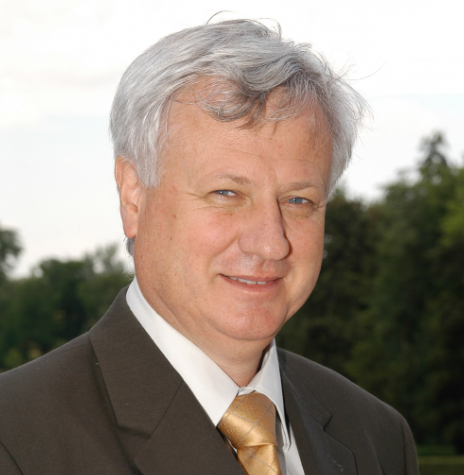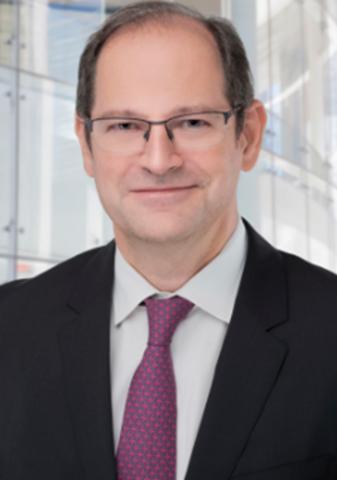
AUV fleet: the first steps of a revolution


In order to complete its service offering and focus its development on innovation, BOURBON is joining forces with the French start-up Arkeocean and Seagnal company in a partnership around the "Deep Swarm Positioning" project, which will eventually enable the development of a fleet of autonomous underwater vehicles, or AUVs. An interview with Thierry Brizard, Chief Engineer of Arkeocean, and Stephan Midenet, CEO of Bourbon Subsea Services.
PartnerSHIP: Arkeocean has focused its development on AUV technology. Could you describe the specificities of this particular market?
Thierry Brizard : The AUV industry is in the early stages of its history, much like the car industry was at the beginning of the last century. Companies like Kongsberg, BlueFin, Hydroïd or ECA can be considered as pioneers. Today's AUVs are assembled individually by skilled craftsmen and have rather modest operational performance. Because of their high unit price, they can only be released in small numbers into the sea for very specific missions.
PS: What kind of missions are you talking about?
T. B.: To give you an example, in March 2014, a BlueFin-21 AUV costing more than a million dollars was deployed to locate the black boxes of the Boeing 777 of Malaysian Airlines flight MH370 and capture the last acoustic signals transmitted. This mission was a failure because to achieve this, it would have been necessary to mobilize a multitude of coordinated "pinheads", forming a listening network deployed in the water column over several square kilometers. But with AUVs costing tens or even hundreds of thousands of euros, this concept is economically unrealistic.
PS: In a similar way to what is currently happening in floating wind, the turning point will be the industrialization phase of these devices?
T. B.: That's right! The AUV industry is still waiting for its Henry Ford and the advent of the Model T that brought the automobile into the era of mass production. I believe that a similar industrial revolution is inevitable in the AUV field to bring to the market solutions finally adapted to the challenge of underwater exploration. This will probably be achieved through the advent of small connected AUVs, able to operate in coordinated swarms, at a unit price that will allow hundreds, even thousands, to be deployed simultaneously to observe the ocean with an instrument of a size finally adapted to its immensity. The world record for the number of AUVs deployed simultaneously was set in September 2020, with 200 vehicles mobilized during a seismic acquisition operation, but a major oil company is not stopping there and is currently working on a program involving potentially up to 3,000 AUVs.
PS: What is the impact of the AUV market in terms of sales?
T. B.: It is about 2 billion euros today, but, according to analysts, it should reach 4 billion within 3 years.
PS: What is the project you are developing today with BOURBON and Seagnal?
T. B.: The DEep Swarm POsiTioning project aims to develop a positioning system demonstrator enabling a large fleet of AUVs deployed over an area of up to 12km2 to move with an accuracy of 2.5 to 4 meters in the water column, to a depth of 3,000 meters. By moving globally, this system allows AUVs to cover large swaths (shooting width) for multiple applications, such as bathymetry and photogrammetry surveys (3D mapping/imaging of the seabed), geotechnical and geophysical acquisitions, or scientific observations by collecting physicochemical parameters. This system is designed to make thousands of underwater drones evolve together. PS: Stephan Midenet, why did BOURBON want to be involved in this project? Stephan Midenet: Bourbon Subsea Services, through its affiliate BO DNT, is a major operator of ROVs, which are used for a range of services, including inspection, maintenance, repair and survey. It is a technology that is quite mature but tends to develop more and more towards AUVs. Their scope is not quite the same, but they offer certain advantages, particularly in terms of flexibility, which is why we plan to acquire an AUV in 2023. It's a first step that will lead to others, and it's a technology that we want to have in our portfolio of services that we offer to our clients, in oil & gas but also in offshore wind. It also illustrates our desire to move towards more innovation. A start-up like Arkeocean can enable us to position ourselves successfully in this market, to work upstream. This approach is also in the context of developing turnkey services for Bourbon Subsea Services. This means not only providing the equipment but also, in some cases, the associated services according to models we are currently investigating. It is therefore even more important to master the operational model to be more efficient and more competitive than our competitors.
PS: Stephan Midenet, why did BOURBON want to be involved in this project?
Stephan Midenet: Bourbon Subsea Services, through its affiliate BO DNT, is a major operator of ROVs, which are used for a range of services, wether in the field of inspection, maintenance, repair in offshore installations, traditional operations of survey, etc. This is a fairly mature technology, but one that will eventually face increasing competition from AUVs, at least in some applications. Their scope is not quite the same, but they offer some advantages, especially in terms of flexibility. This is why we plan to acquire a "traditional" AUV in 2023 to expand and evolve the range of services we offer. This is a first step that calls for others, so we also want to look to the future and to new technologies that will allow us to offer differentiated services with greater operational efficiency. AUVs fleets are potentially one of these technologies and it is a technology that we would like to have in the future in the portfolio of services we offer our clients, in oil&gas but also in offshore wind. Hence our participation in this project. It also illustrates our desire to move towards greater innovation and higher value-added services
The AUV sector is currently in turmoil. There are historical manufacturers who propose devices with a cost equal to that of an ROV, between 5 and 10 M€. In my opinion, this type of AUV does not reflect what this sector will be tomorrow.
PS: What do you think of the AUV market?
S. M.: The AUV sector is currently in turmoil. There are historical manufacturers who propose devices with a cost equal to that of an ROV, between 5 and 10 M€. In my opinion, this type of AUV does not reflect what this sector will be tomorrow. There must be a real revolution to gain operational efficiency. Many start-ups are being created all over the world, concepts are being developed, etc. This market is not mature, but it is in the making. BOURBON therefore wishes to add AUVs to its portfolio of subsea activities and equipment. When we analyze the ecosystem that exists around these devices, we believe that there are or will soon be ways to deliver certain underwater services more efficiently. So eventually we want to have those kinds of solutions in our service portfolio. I am interested in the concept of a "swarm" or fleet of AUVs because I believe that if we can, at least for some applications, move from large, expensive AUVs that require complex logistics, mobilize large vessels and represent a real operational complexity, to a fleet of low-cost, flexible AUVs capable of acquiring very large volumes of data, we will open up new possibilities and new markets, particularly in offshore wind energy.
PS: What is your role in this partnership with Arkeocean?
S. M.: We will bring our skills in installation engineering, vessel and operations management, our experience in subsea operations and ROVs, which will be combined with Arkeocean's subsea acoustic skills and Seagnal's expertise. Beyond our expertise, we also bring the credibility of a leader in offshore oil, gas and wind marine services.
T. B.: BOURBON brings us its seniority and gives credibility to the project. In addition, our system is based on a vessel and a marine infrastructure designed by BOURBON engineers whose excellence in terms of engineering and knowledge of the deep sea has already been appreciated. We also expect a lot of cross-fertilization between BOUBON's knowledge of ROVs and ARKEOCEAN's knowledge of AUVs. Our relationship is very fluid, cordial and with shared "benefits"! By this I mean that if we succeed in carrying out our project, BOURBON will be able to offer innovative survey solutions to its clients, thereby strengthening its position in the Oil & Gas and offshore wind energy markets.
PS: Concretely, what stage of development are you at?
T. B.: We are in the process of launching a new type of AUV, quite revolutionary, for military and other applications, which will be sold "ready to sail" with all their equipment and guidance devices at around €20,000 per unit, whereas equivalent AUVs on the market are around €80,000. And we consider this as a step, as the beginning of a great adventure in which Arkeocean, Seagnal and BOURBON will be the driving forces...

